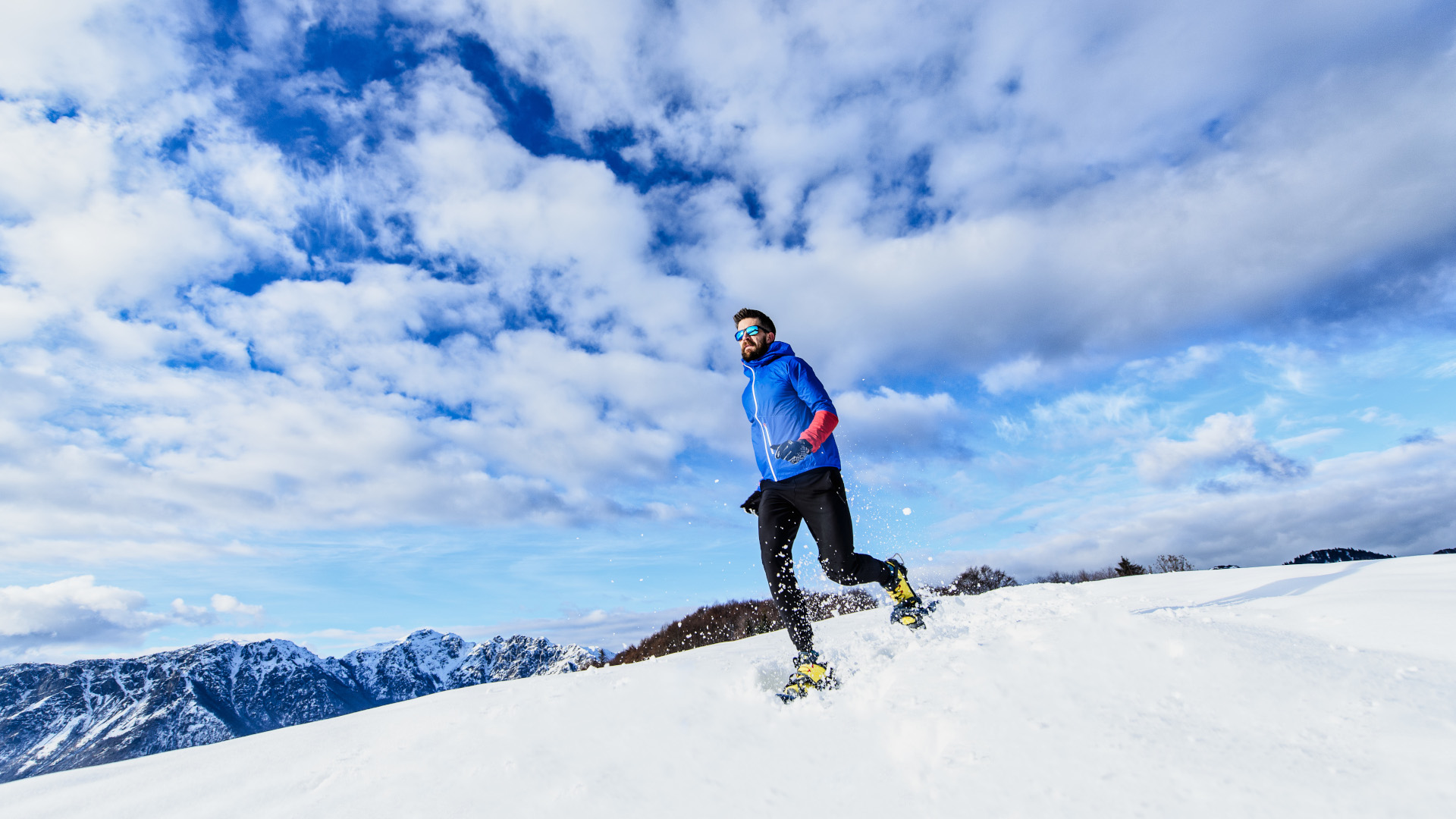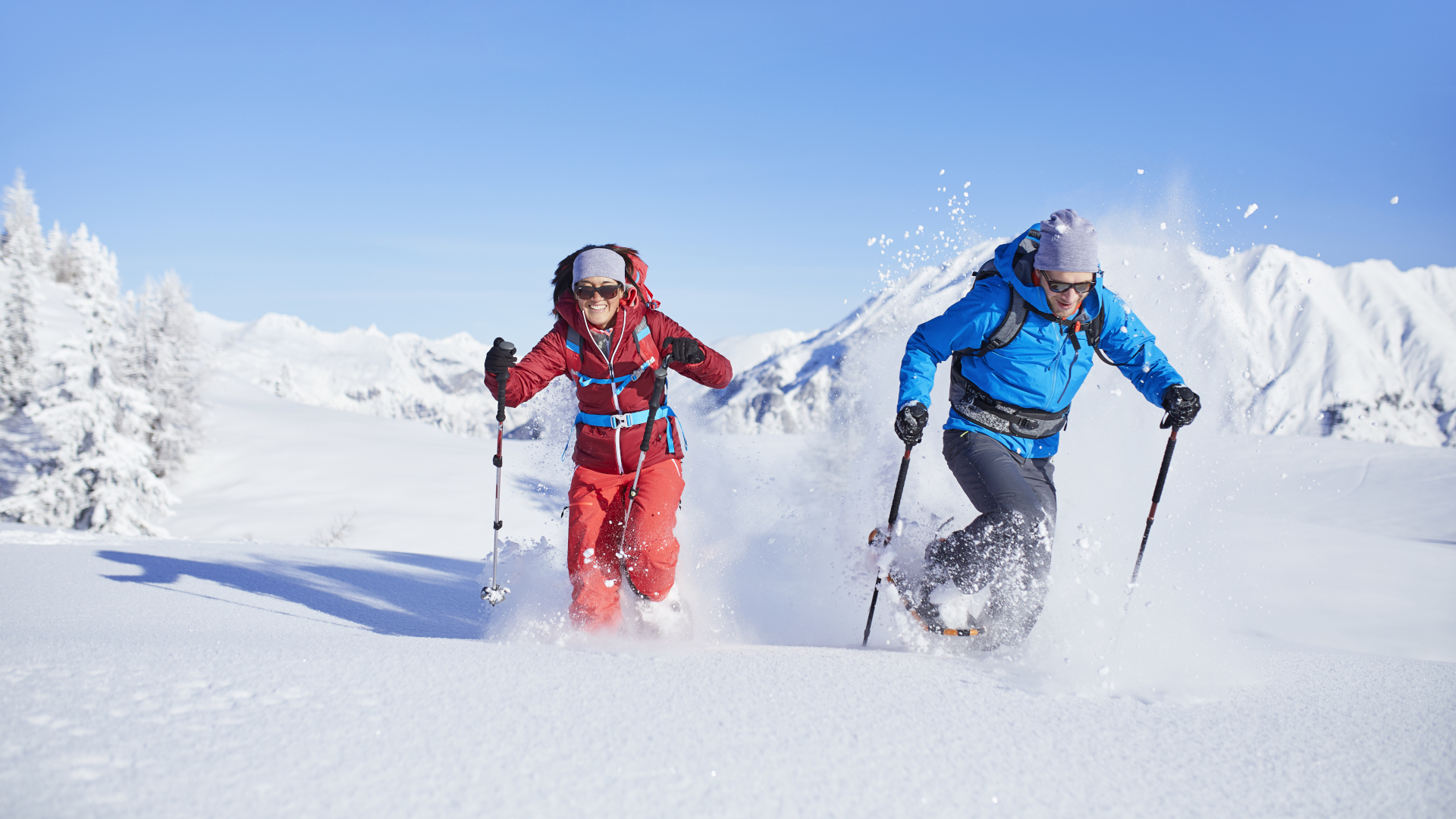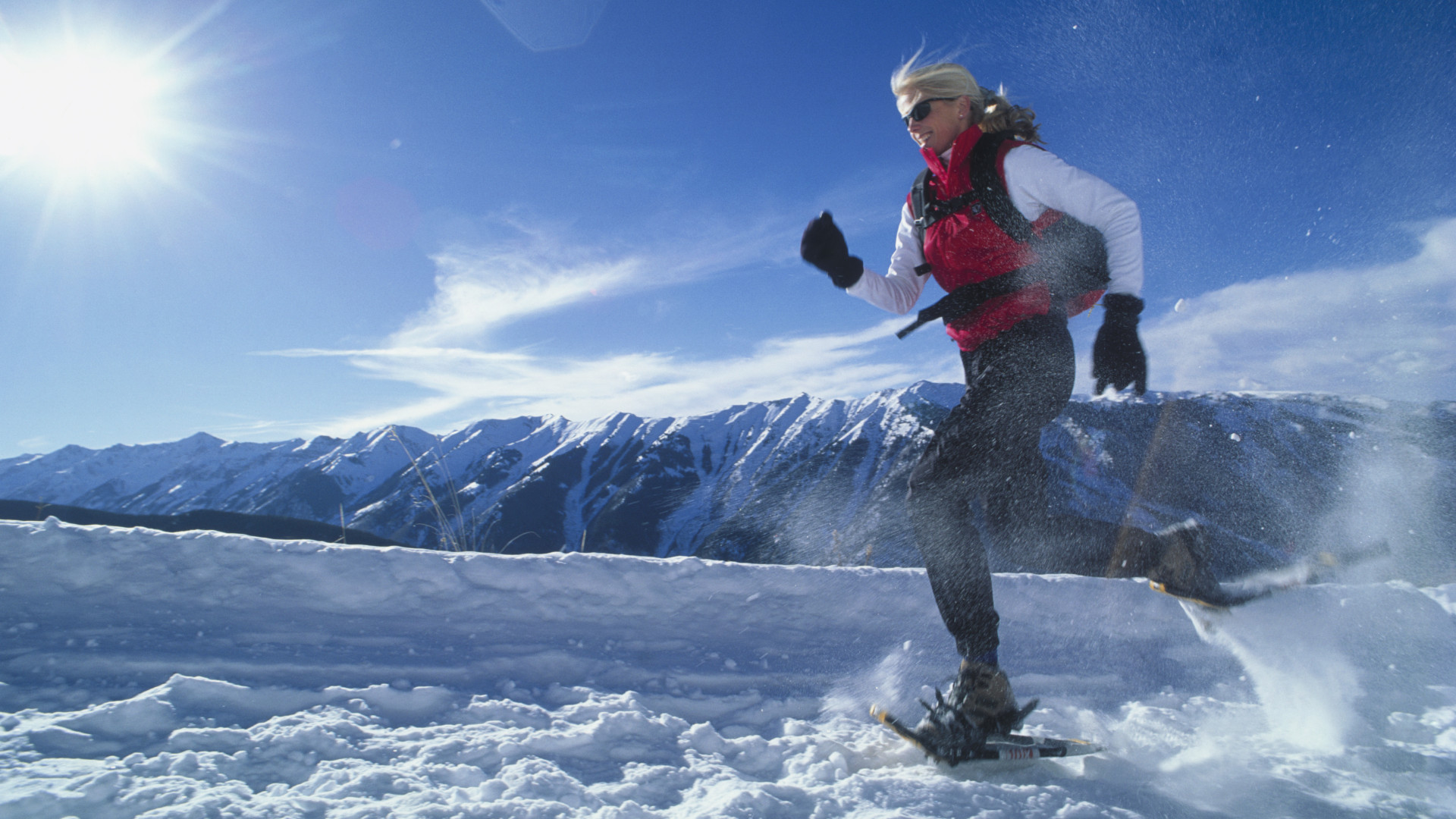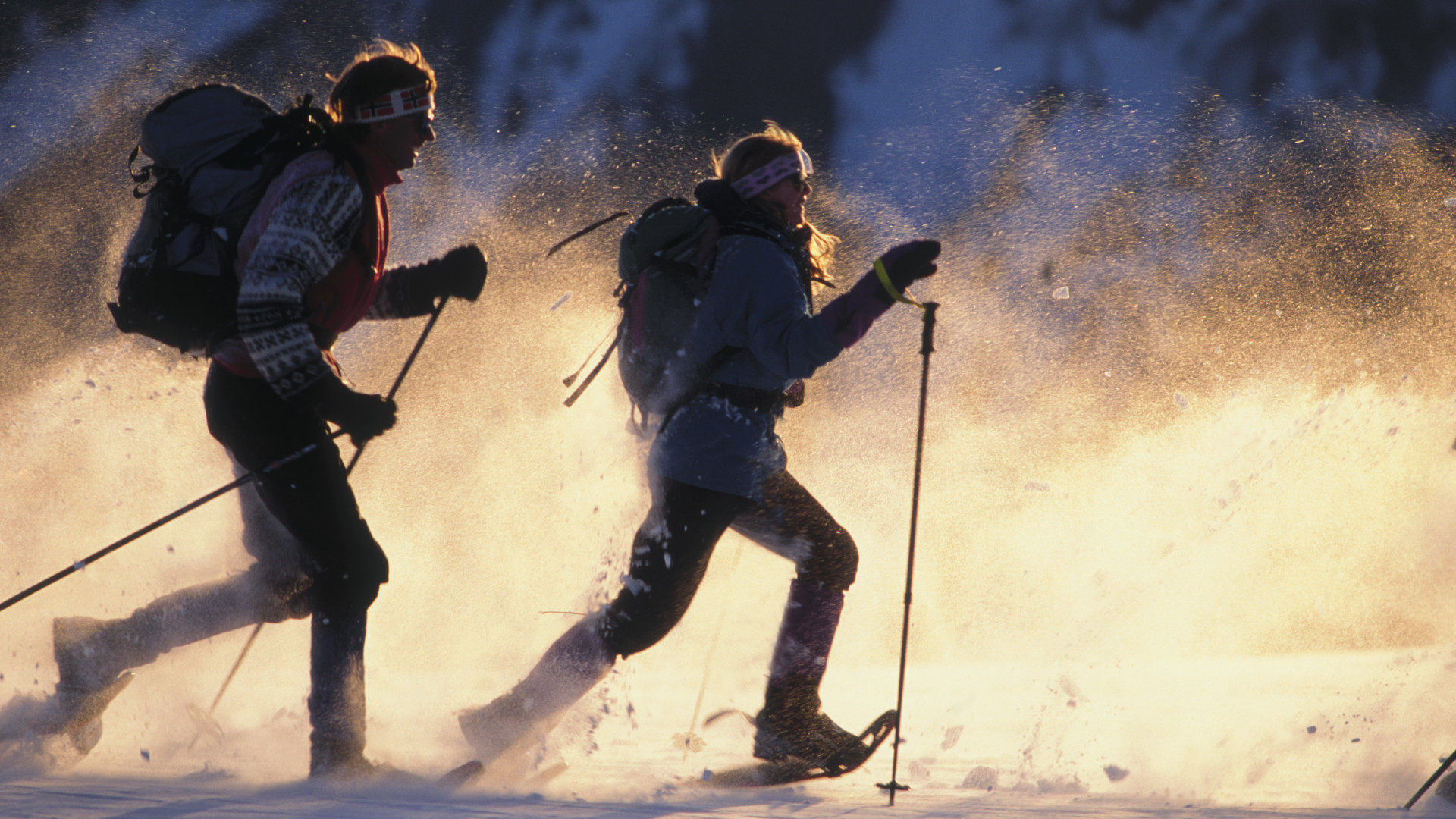Running in snowshoes: is it possible? And how do you do it?
Thinking about running in snowshoes this winter? We run you through the yays, nays and how tos so you can have fun and stay safe

If you’re a trail runner living in a snow state, the onset of winter may not harken the excitement of winter wonderland days; rather, the dread of moving your running routine onto the monotony of a treadmill. If you’re wondering about running in snowshoes to keep your training going throughout the winter, we’re here to run you through the yays, nays and how to’s so you can have fun and stay safe.
First, why might you not want to run in snowshoes? Snowshoes are longer and wider than your regular shoes, so running in them is a little cumbersome and definitely changes your gait a little, which can increase your risk of injury or annoying pain. However, there are now snowshoes made specifically for running these days, and they do provide a great deal of stability underfoot making it safer than trying to run on ice or snow without them.

Running in snowshoes also has lots of benefits, however. First, it gets you outdoors year-round which carries with it excellent, proven benefits for your mental health. It also allows you to run in the backcountry in challenging, uneven terrain which will provide more of a physical challenge and probably have you emerging from winter stronger than if you stick to the gym. You’re likely to run slower in snowshoes than on a treadmill, which keeps you in fat-burning mode, and also makes it lower impact and kinder on your joints.
With a little caution, it is possible to run in snowshoes safely, even if you’re new to snowshoeing. Here are our tips for getting started.
Choose the right snowshoe
First off, if you already own a bigger pair of snowshoes that you use for hiking, don’t use these for running. They will most likely be too big and make things difficult, or even dangerous. Choose a pair of snowshoes that are meant for running – these will be lightweight, compact and have bindings that attach tightly to your shoe so they don’t flop around while you’re moving.
Dress properly
Dressing for running in snowshoes means lots of moisture wicking later and possibly waterproof gear, depending on the weather and climate where you are. Rather than wearing typical snowshoeing gear like you would for hiking, take a look at our article on what to wear for cross country skiing and make some modifications like thin gloves and socks, a headband and tights so that you can move and you’re not overheating in heavy, insulated layers. Rather than hiking boots of course, you may want waterproof trail running shoes and if you’re running in deep, wet snow, wear gaiters to protect your feet.

Adapt your technique
Don’t expect – or try – to run the way you normally do. Slow way down to accommodate the extra weight and girth on your feet and the uneven terrain. Adjust your gait so your feet are a little wider and your knees are a little higher. Pay attention to your posture. Don’t be attached to your usual mileage or pace as you’ll be getting far more of a workout per mile than you do in summer. In fact, consider running in snowshoes to be a whole new activity.
All the latest inspiration, tips and guides to help you plan your next Advnture!
Start small – and close to home
It’s best not to start out too adventurous. You want to be patient and take the time to figure out your technique and be safe. Find a reasonably flat area not too far from home and work on your running strategy before getting too deep into the backcountry. Once you start getting out in the backcountry, make sure you’re familiar with avalanche safety if you’re running on steep grades, and if you do find yourself out of your depth, remember you can simply walk back to the car.

Practice on groomers
Naturally a big part of the appeal of snowshoes is getting out in the backcountry and into some deep snow that you wouldn't otherwise be able to run on, but it’s a good idea to find some packed snow or even groomed terrain to start out, then progress to more challenging conditions underfoot once you’re comfortable.
Try using poles
As we explained in our article on running with poles, doing so may increase your efficiency, especially on hills. On snowshoes, it has the added advantage of helping you with balance, which can be awkward when you’re navigating variable snow conditions. You certainly don't have to use poles when running in snowshoes, but it’s worth trying it out before you make up your mind. Remember: this is a whole new sport after all.
Julia Clarke is a staff writer for Advnture.com and the author of the book Restorative Yoga for Beginners. She loves to explore mountains on foot, bike, skis and belay and then recover on the the yoga mat. Julia graduated with a degree in journalism in 2004 and spent eight years working as a radio presenter in Kansas City, Vermont, Boston and New York City before discovering the joys of the Rocky Mountains. She then detoured west to Colorado and enjoyed 11 years teaching yoga in Vail before returning to her hometown of Glasgow, Scotland in 2020 to focus on family and writing.

